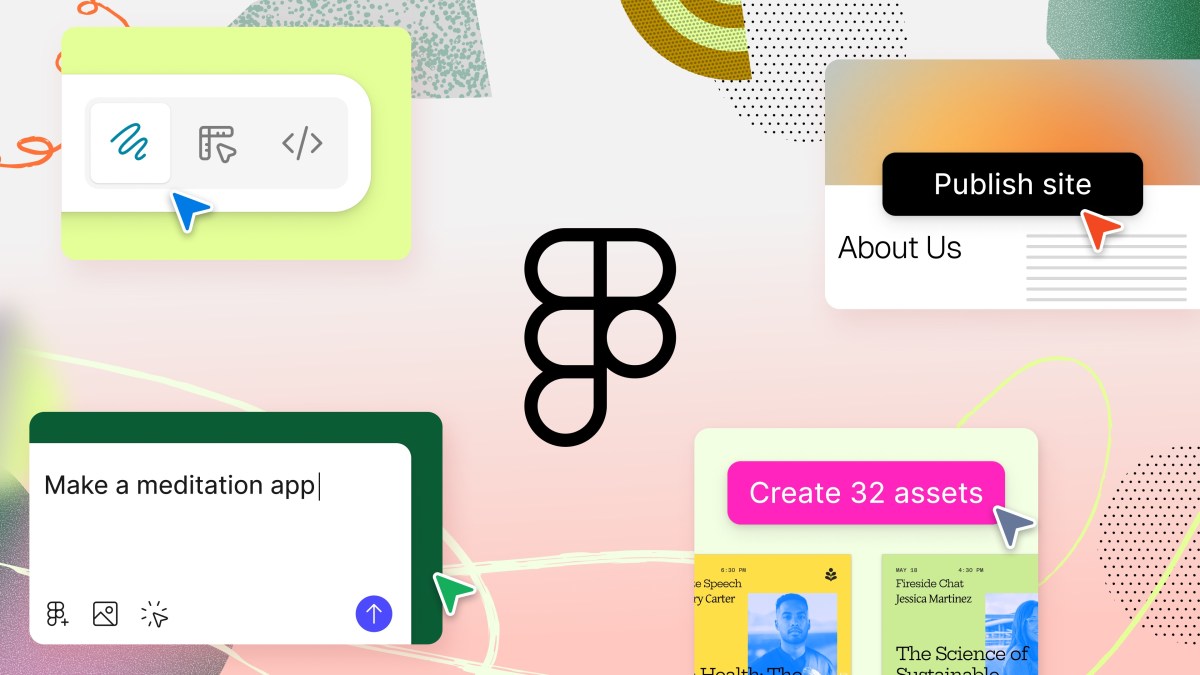Design company Figma today announced multiple features, including AI-powered site and web app creation, a way for marketers to create assets in bulk, and a new drawing tool. With this launch, the company is taking on other creative solutions such as Canva and Adobe, along with AI-powered website and prototype creators such as WordPress, Wix, Hostinger, and Replit.
The company’s website creation tool is called Figma Sites. The startup said that often designers build prototypes of what a site should look like within Figma. With the new AI-powered tool, they can easily create websites and even publish them. Once the site is generated, collaborators can easily change elements of the site through an editor without prompting.
Users can also add transitions, animations, and scroll effects while making the site responsive. Figma is adding the ability to directly generate blog posts from its site. That means the Sites will have a content management system (CMS), which is an upcoming feature, baked in that lets users edit posts within the design of a blog and also manage other assets such as thumbnails and slugs.
For interactive elements like stock tickers, you can add custom code or use AI to generate code for you.

Figma Make, on the other hand, is a similar AI-powered tool, which is geared more towards ideation and prototyping. Users can input a prompt to create a web application. The prototype app is collaborative, and users can prompt the assistant to change or add certain elements. Plus, if there is a developer on the team, they can directly modify the code to make necessary changes.
Users can also generate small interactive elements, such as a clock, and embed them in the pages published through Figma Sites later.
Yuki Yamashita, chief product officer at Figma, said that both products share a lot of features and underlying technology.
Techcrunch event
Berkeley, CA
|
June 5
BOOK NOW
“We want to enable high-fidelity prototyping with Figma, especially with Figma Make. You can add more data to it and try to see how viable an idea is in terms of final implementation. Whereas Figma Site is useful for a marketing and design team when they exactly know how a site should look and take full control of that,” Yamashita told TechCrunch while describing the differentiation between these products.

Multiple companies in different sectors are looking for a way to create interactive experiences using AI. Website hosting providers such as Squarespace, Wix, WordPress, and Hostinger have released tools to let users easily create websites through AI. On the other hand, tools like Replit and Lovable are pushing users to create apps or prototypes without coding knowledge. Last month, even Canva released a way to create interactive experiences within its designs with Canva Code.
This isn’t the first foray for Figma into prototyping, though. Last year, it released a Make Design feature, which had to be pulled after users accused the company of heavily training the tool on existing apps.
What’s more, Figma is releasing a new tool for marketers called Figma Buzz. With these tools, marketers can easily use templates created by designers with brand-specific designs to make new creatives. They can also use a tool to insert AI-generated images or change the background of certain assets. Marketers can also create assets in bulk using data from sources like spreadsheets.
The startup is also launching a tool called Figma Draw for vector editing and illustrations. Yamashita said that designers often had to export their vector designs outside Figma to make edits. The company is now adding features like text on a path, pattern fill, brushes, multi-vector edit, adding noise and texture, and a lasso selection to its Draw product.

Figma launched its Slides tool for creating presentations last year. With the new asset creation and drawing tool, the company is directly competing with creative suites such as Adobe and Canva. Yamashita denied that the company is directly competing with these creative tools. He said that Figma is in the business of building digital products, and a third of the company’s users are developers, thanks to tools like Dev Mode.
The company is announcing a new plan called a content seat starting at $8 per month, which will give users access to Figma Buzz, Slides, FigJam, and Sites CMS.











